Key Takeaways
- Common residential wasps include yellowjackets, paper wasps, hornets, mud daubers, and carpenter bees.
- Yellowjackets and hornets are more aggressive, especially when defending nests.
- Mud daubers and carpenter bees rarely sting, but carpenter bees can damage wood structures.
- Proper identification helps reduce risk and avoid unnecessary interaction.
- Professional pest control is the safest and most effective way to handle wasp infestations.
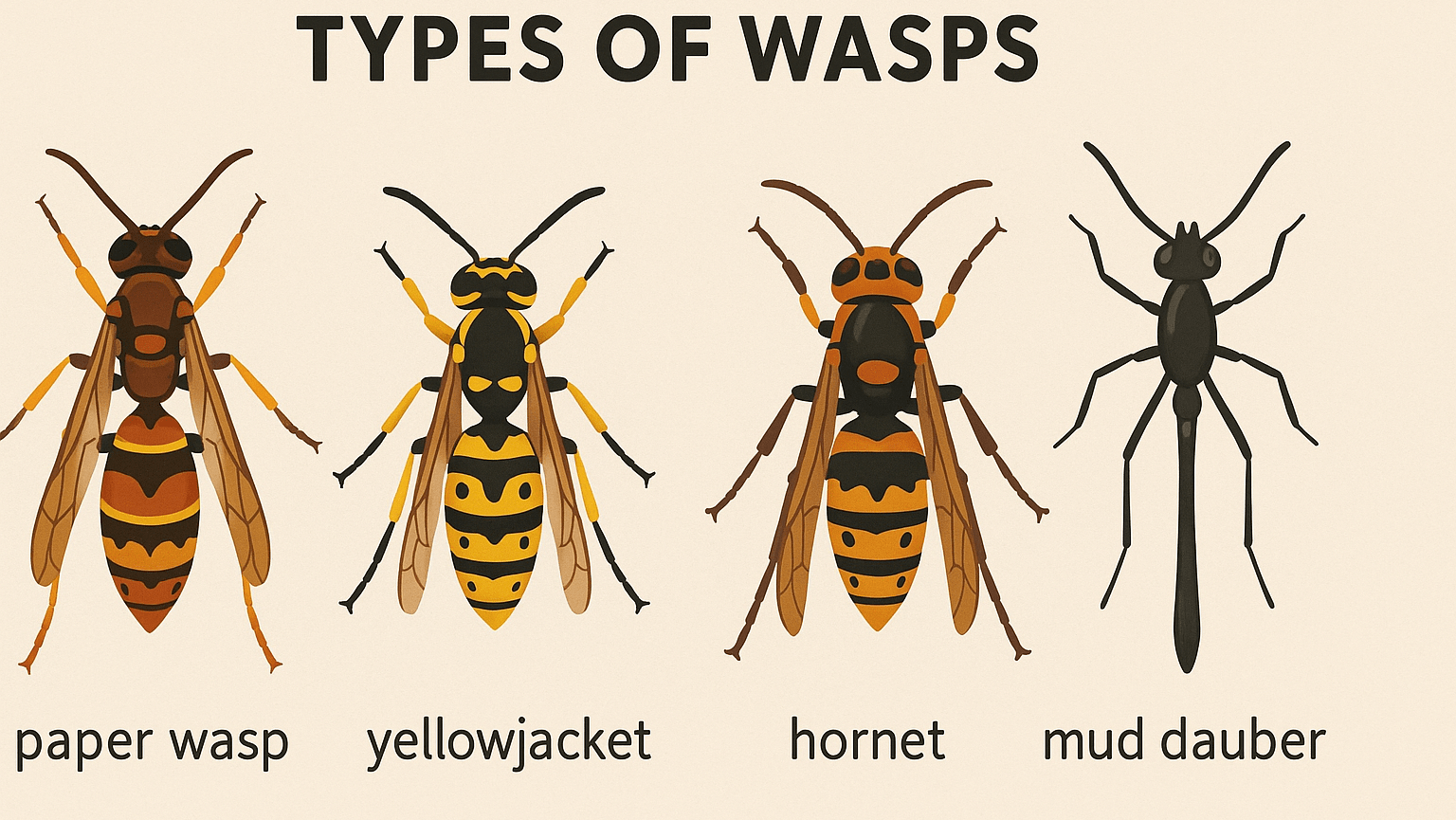 Wasps are common insects that can be found in residential areas, often making nests near homes, gardens, or even underground. While some wasps are beneficial to the ecosystem by controlling pest populations, their presence can also be a nuisance or even dangerous, especially if they become aggressive.
This article acts as a comprehensive guide on identifying and understanding the common types of wasps found in residential areas, their physical traits, nesting habits, behavior, and the potential risks they pose. It also highlights why professional pest control services may be necessary to manage infestations effectively.
If you’re noticing wasps around your home and want peace of mind, schedule your Free Pest Inspection today. Our experts will quickly identify potential wasp problems and provide effective solutions to keep your home safe and wasp-free.
Wasps are common insects that can be found in residential areas, often making nests near homes, gardens, or even underground. While some wasps are beneficial to the ecosystem by controlling pest populations, their presence can also be a nuisance or even dangerous, especially if they become aggressive.
This article acts as a comprehensive guide on identifying and understanding the common types of wasps found in residential areas, their physical traits, nesting habits, behavior, and the potential risks they pose. It also highlights why professional pest control services may be necessary to manage infestations effectively.
If you’re noticing wasps around your home and want peace of mind, schedule your Free Pest Inspection today. Our experts will quickly identify potential wasp problems and provide effective solutions to keep your home safe and wasp-free.
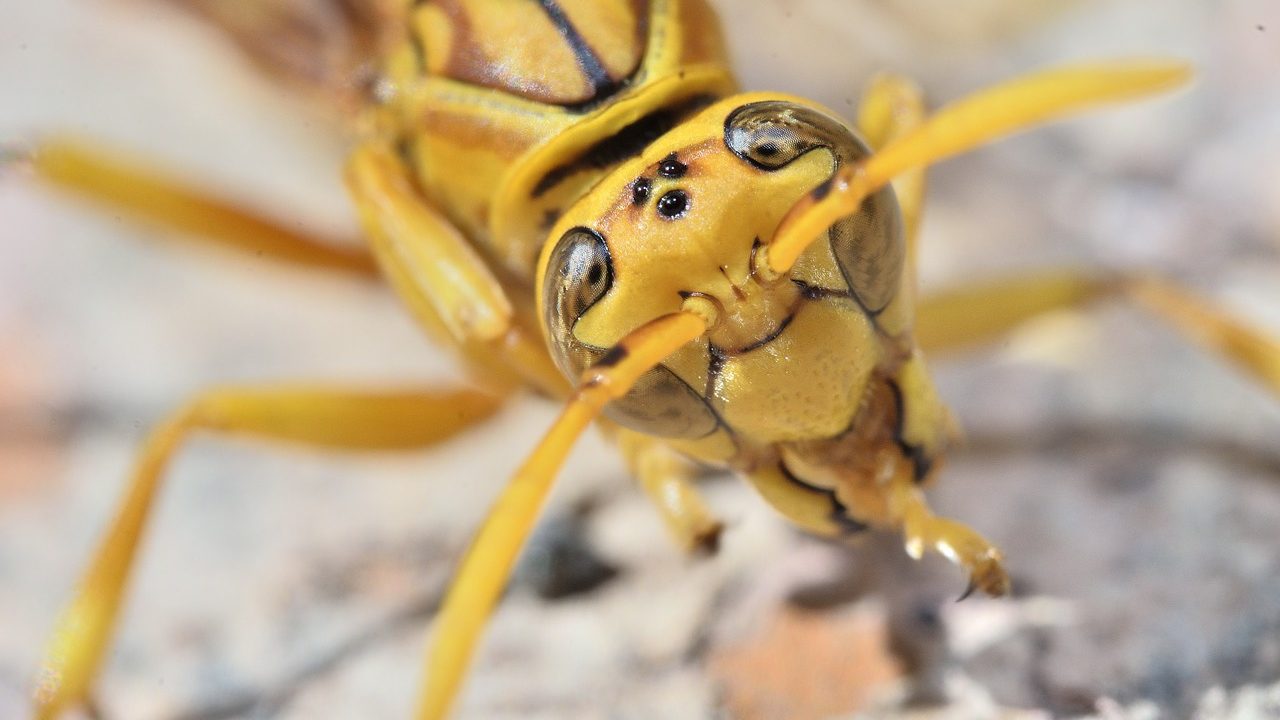
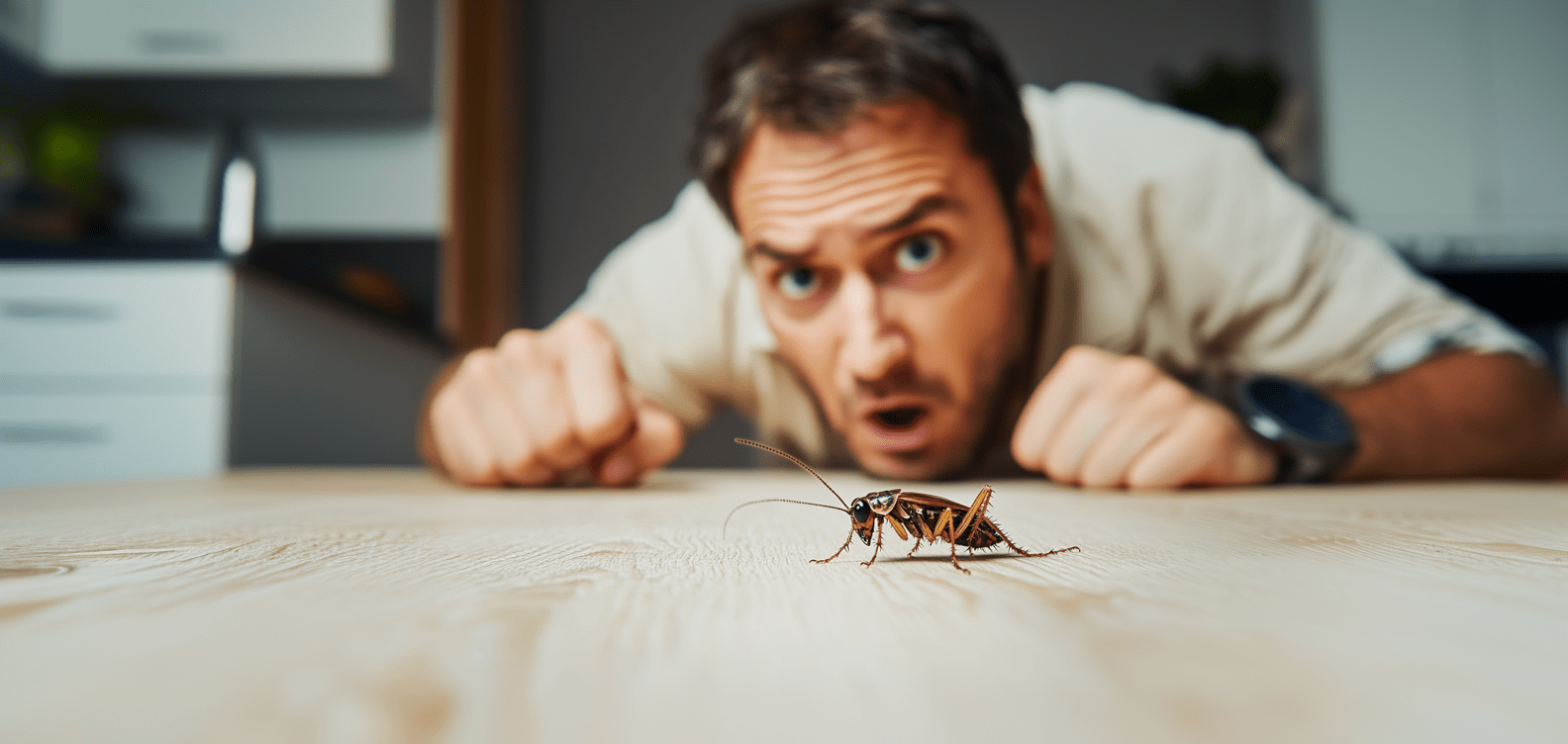
Not getting a solution?
Get your free pest control estimate today!Yellowjackets
Yellowjackets are small, highly aggressive wasps commonly mistaken for bees due to their appearance i.e. black and yellow markings. However, their smooth, shiny bodies and behavior distinguish them from other insects. These wasps are notorious for their territorial nature and their ability to sting multiple times, making them a significant concern during late summer and fall.Physical Characteristics of Yellowjackets
-
Size: Typically 0.5 to 0.75 inches in length.
-
Color: Bright yellow with black markings on their bodies.
-
Body: Smooth and shiny, lacking the fuzz found on bees.
-
Wings: Clear and folded lengthwise when at rest.
-
Antennae: Long, thin, and black.
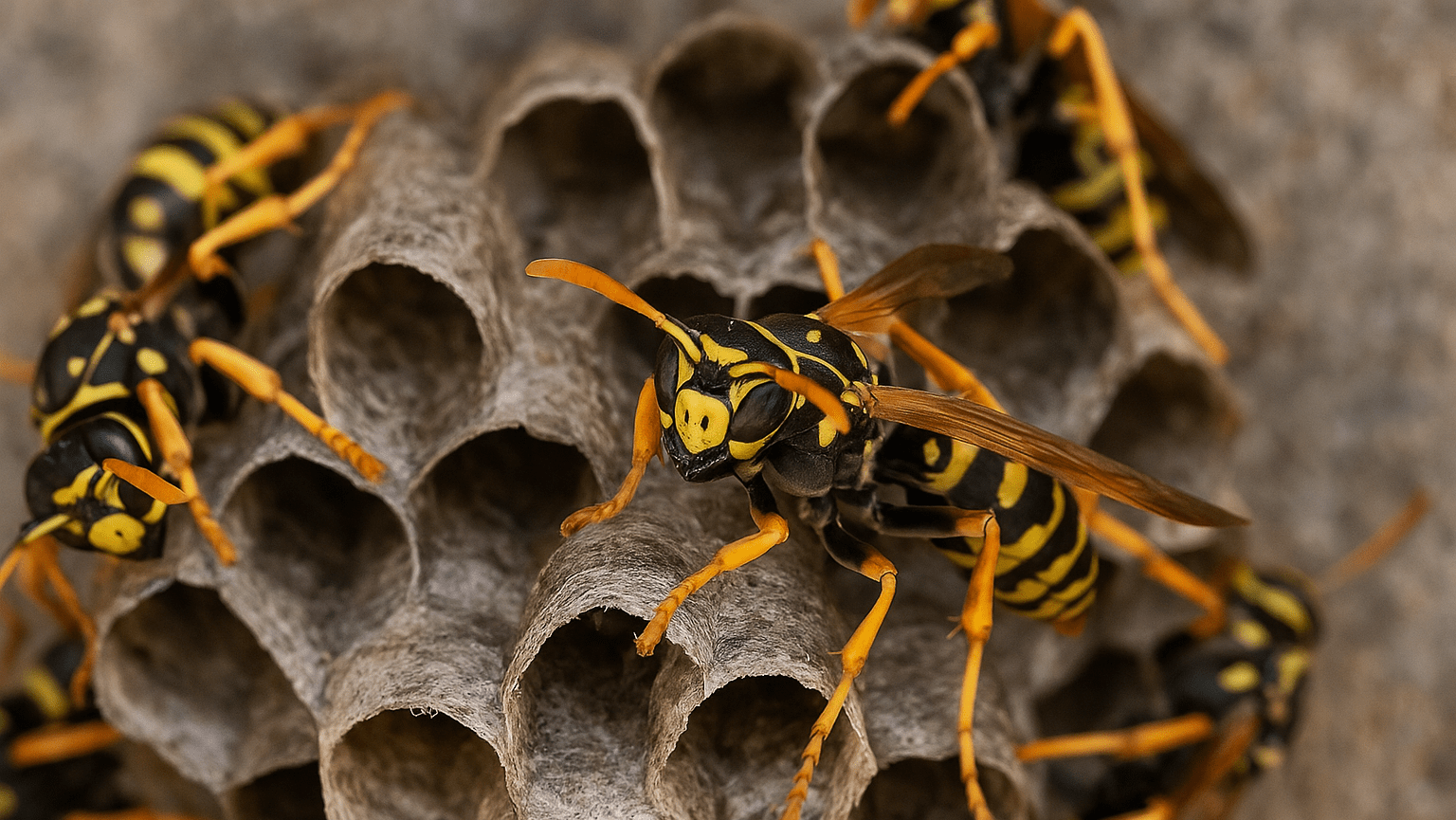
Paper Wasps
Paper wasps are slender, long-bodied wasps that are less aggressive than yellowjackets but still pose a risk if their nests are disturbed. Known for their papery nests, they are a common sight in sheltered outdoor areas during the warmer months.Physical Characteristics of Paper Wasps
-
Size: Typically 0.75 to 1 inch in length.
-
Color: Brown, yellowish, or reddish with lighter markings.
-
Body: Slender and elongated with a narrow “waist” connecting the thorax and abdomen.
-
Wings: Long and folded against their bodies when at rest.
-
Antennae: Medium-length and slightly curved.
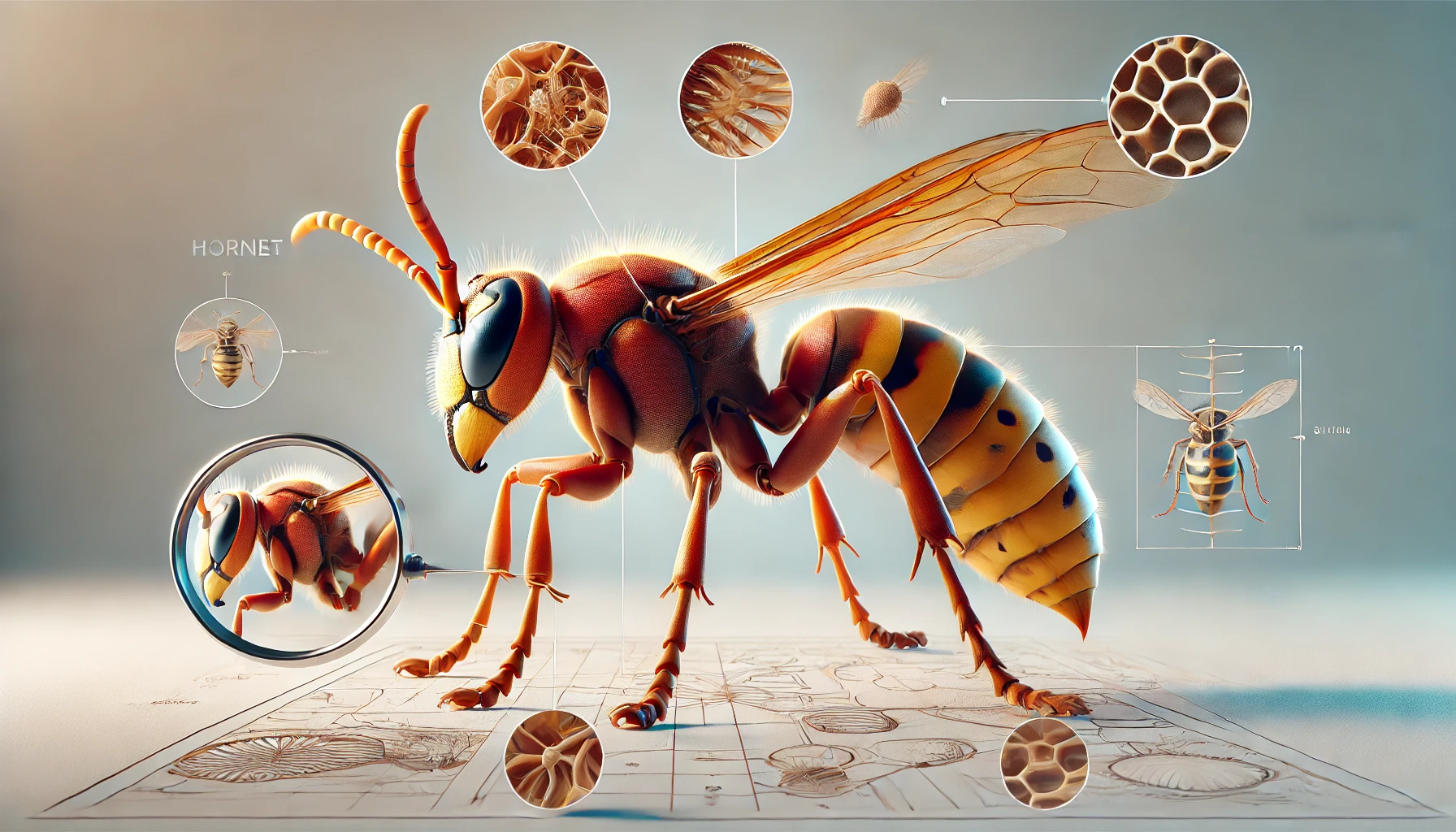
Hornets
Hornets are large, robust wasps known for their intimidating size and highly aggressive nature. They play a huge role in keeping pest populations under control, but can pose risks to humans due to their painful stings and defensive behaviour near nests.Physical Characteristics of Hornets
-
Size: Up to 2 inches long, significantly larger than other wasps.
-
Color: Typically black-and-white or yellow-and-black patterns on smooth, shiny bodies.
-
Body: Stocky and powerful with a distinctive broad head.
-
Wings: Strong, transparent wings used for swift and agile flight.
-
Antennae: Medium-length, straight, or slightly curved.
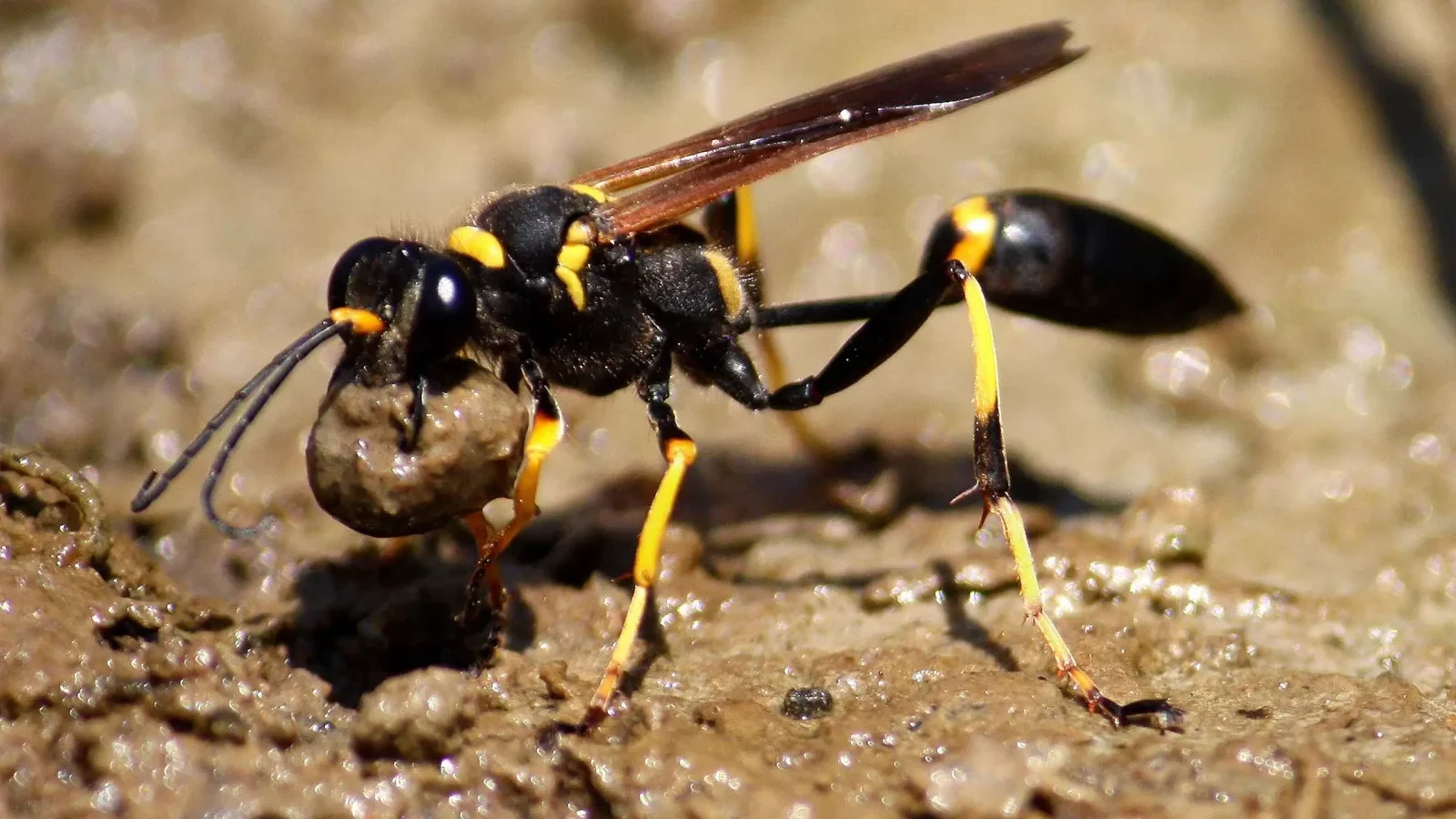
Mud Daubers
Mud daubers are solitary wasps known for their unique appearance and non-aggressive nature. Unlike social wasps, they rarely sting and are considered beneficial due to their pest-control habits.Physical Characteristics of Mud Daubers
-
Size: Smaller than yellowjackets, typically around 0.5 to 1 inch long.
-
Color: Black or metallic blue, with some species featuring yellow markings.
-
Body Shape: Long, slender bodies with extremely narrow waists connecting the thorax and abdomen.
-
Wings: Transparent or dark-tinted wings used for agile flight.
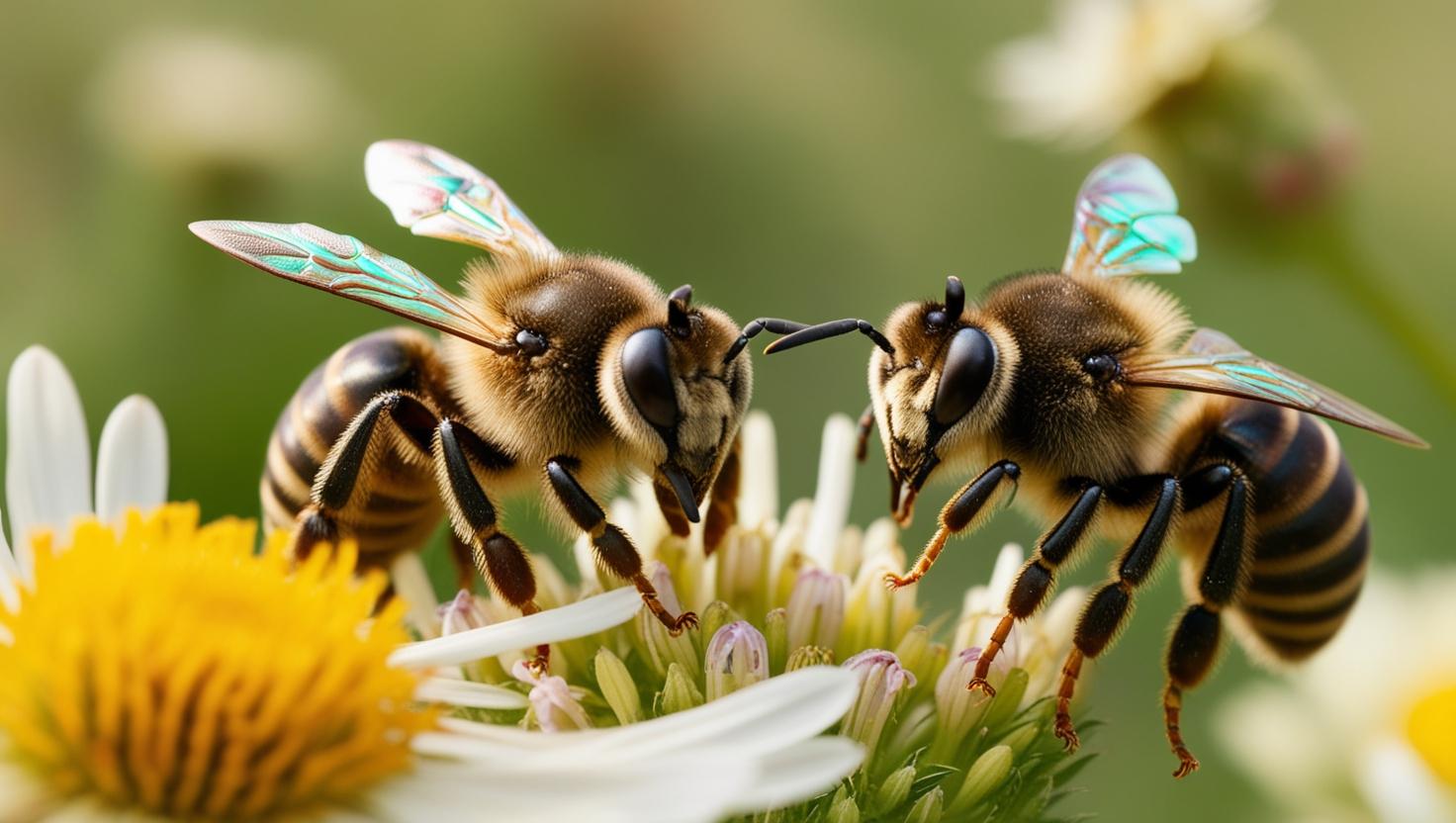
Carpenter Bees
Carpenter bees are large, solitary bees often confused with bumblebees due to their size and appearance. While generally harmless, their nesting habits can lead to structural damage over time.Physical Characteristics of Large Carpenter Bees
-
Size: Large, ranging from 0.75 to 1 inch in length.
-
Color: Black or metallic blue with shiny, hairless abdomens.
-
Body Shape: Resemble bumblebees but lack the dense, fuzzy hair on their abdomens.
-
Wings: Transparent with a slight sheen, enabling quick and direct flight.





